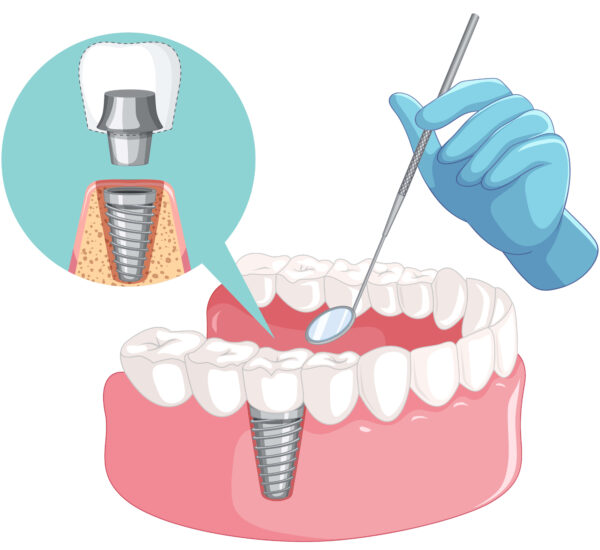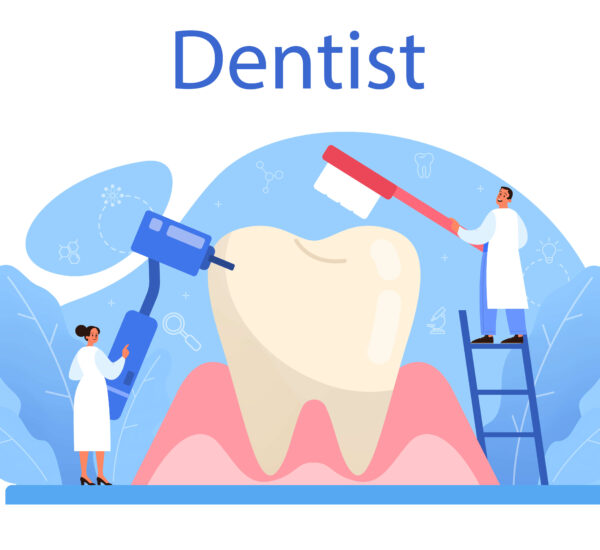When it comes to oral health, it is important to be well aware of the possible health threats that may occur. Bone loss, which involves 2 types, the vertical and horizontal bone loss, can have a significant impact on one’s mouth functionality. However, they can affect in different ways. That’s why it is best to begin with a comparison topic like vertical vs horizontal bone loss.
In this blog, let’s uncover their differences as we thoroughly dwell on the vertical vs horizontal bone loss topic. Explore this comprehensive overview and discover the valuable insights and threats posed by vertical and horizontal bone loss. Let’s begin!
Defining Bone Loss in Oral Health

Before we dive into the specifics of vertical and horizontal bone loss, it is important to understand the overall importance of bone structure in oral health. The teeth are supported by the jawbone, which provides strength and stability to your bite. In short, the health of the jawbone is crucial for maintaining proper oral function, aesthetics, and overall well-being. Therefore, any form of bone loss can pose significant threats to your oral health.
Bone loss occurs when the density and mass of the jawbone decrease. At its core, this condition weakens the jawbone, compromising its ability to support the teeth and maintain facial structure. Take note that decreased bone density in the jaw has been linked to an increased risk of systemic conditions such as osteoporosis and cardiovascular disease. That’s why preserving the health of the jawbone is not only vital for oral health but also for maintaining overall well-being.
Vertical vs Horizontal Bone Loss

What is Vertical Bone Loss
Vertical bone loss or vertical alveolar bone loss refers to a specific type of bone loss characterized by a decrease in bone height. When vertical bone loss occurs, it can create a domino effect of issues within the mouth. The reduced bone height can compromise the stability of dental implants or other restorative devices, making it challenging for them to be securely anchored in place. This can lead to difficulties with chewing and speaking, as well as discomfort or pain in the affected area.
Suffering from the vertical bone defect can be alarming because of the consequences mentioned. That’s why it is important to seek a specialty expert to alleviate this vertical defect. Make sure to address your oral health by visiting the dentistry field periodontics.
Identifying Horizontal Bone Loss
Meanwhile, horizontal bone loss is the most common form of bone loss, which affects the oral cavity. Unlike vertical bone loss, which primarily affects bone height, horizontal bone loss involves a decrease in bone width. Horizontal bone loss can be a complex and multifactorial condition that requires careful attention and management.
When a patient suffers from a periodontal bone loss condition like chronic periodontitis, it can affect the alveolar bone and periodontal ligament. resulting in horizontal bone loss. Most cases of bone loss involve horizontal bone loss, which research has proven through studying the radiographs of patients.
If you have developed this condition and impacted your oral health, it is best to visit a periodontist immediately. That way they can provide the necessary treatment options to resolve the situation.
Vertical vs Horizontal Bone Loss: Key Differences

While both vertical and horizontal bone loss are concerning conditions, it is still important to understand how it can result in oral health complications. Let’s differentiate them below!
Comparing the Causes
Like any other health condition it is there are certain factors that can contribute to bone loss. In short, with the vertical vs horizontal bone loss comparison, there are some factors that might differ.
- Vertical bone loss: primarily caused by periodontal disease, a bacterial infection that affects the gums and bone supporting the teeth.
- Horizontal bone loss: often associated with traumatic dental injuries or aggressive tooth extraction procedures.
The diverse origins of these conditions highlight the importance of accurate diagnosis and targeted interventions to address the specific underlying causes.
Contrasting the Effects on Oral Health
On the other hand, both types of bone loss can bring a significant yet different impact to the patient’s oral health. As mentioned, vertical bone loss can affect the bone height, while horizontal bone loss affects the width. It doesn’t end there as there are still other consequences that may arise.
Let’s have the vertical vs horizontal bone loss comparison below:
- Vertical bone loss: can lead to issues such as tooth mobility, drifting of teeth, and concerns related to smile aesthetics.
- Horizontal bone loss: can pose challenges for fitting dental prostheses like bridges or dentures. Additionally, decreased bone width may compromise the stability and support of adjacent teeth, impacting overall oral function.
While vertical vs horizontal bone loss offers different standpoint, it can still be useful for patients to understand these comparisons. That way, they can easily identify which type of bone loss they have and what to relay to their doctor for a consultation.
Preventing Bone Loss

When it comes to bone loss in oral health, prevention and early intervention are key. Implementing preventive measures and seeking timely treatment can help mitigate the progression of bone loss and preserve your oral health.
But what exactly are the preventive measures you can take to combat bone loss?
Practicing good oral hygiene, including regular brushing and flossing are crucial in preventing both vertical and horizontal bone loss. By removing plaque and bacteria from your teeth and gums, you can reduce the risk of gum disease. Additionally, quitting smoking and maintaining a healthy lifestyle can also play a significant role in reducing the risk of bone loss. Smoking has been linked to an increased risk of gum disease and impaired healing, which can further contribute to bone loss.
Treatment Options for Vertical and Horizontal Bone Loss
While preventive measures are essential, it’s equally important to be aware of the treatment options available for bone loss. The treatment options vary depending on the extent and cause of the condition. In some cases, non-surgical interventions, such as scaling and root planing, may be sufficient to address early stages of bone loss. This procedure involves deep cleaning of the root surfaces to remove plaque and tartar buildup, allowing the gums to heal and reattach to the teeth.
However, advanced cases of bone loss may require surgical interventions, such as bone graft or guided tissue regeneration. Bone grafting involves transplanting bone tissue to the affected area to stimulate new bone growth, while guided tissue regeneration involves using a barrier membrane to promote the growth of new bone and gum tissue.
Furthermore, in cases of significant tooth loss resulting from bone loss, dentures or dental implants may be recommended to restore functionality and aesthetics.
Whether it is non-surgical or surgical, the type of treatment method will still depend on the observation of the dentist. There are certain methods that may fit for vertical bone loss alone, and vice versa. That’s because the doctor will check on the severity of the case, then derive the suitable treatment option. So, it is best to visit the dentist annually to analyze the oral health, and to identify whether or not there’s a bone loss that needs treatment.
Final Takeaway
Detection of bone loss can be difficult, especially if the patient has no idea of what it is and its effect on one’s oral health. This discussion about the vertical vs horizontal bone loss indicates the nature of both conditions and why it can be alarming. Both types of bone loss can impact the oral health, and leave significant problems, unless addressed immediately.
Book an online consultation with a periodontology or periodontics expert to address your oral health concerns. Discover the type of bone loss you might have and learn how to treat the conditions better.



